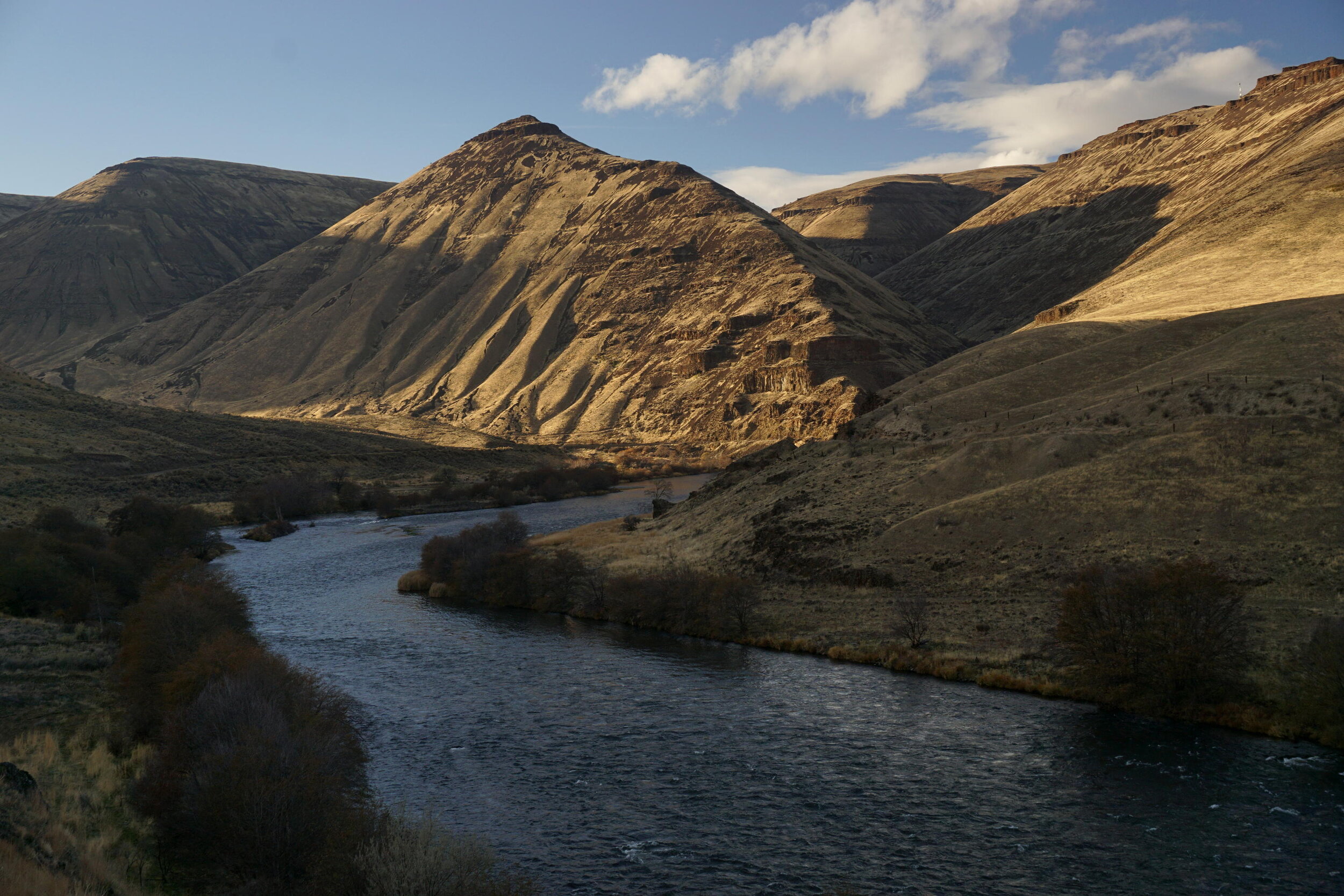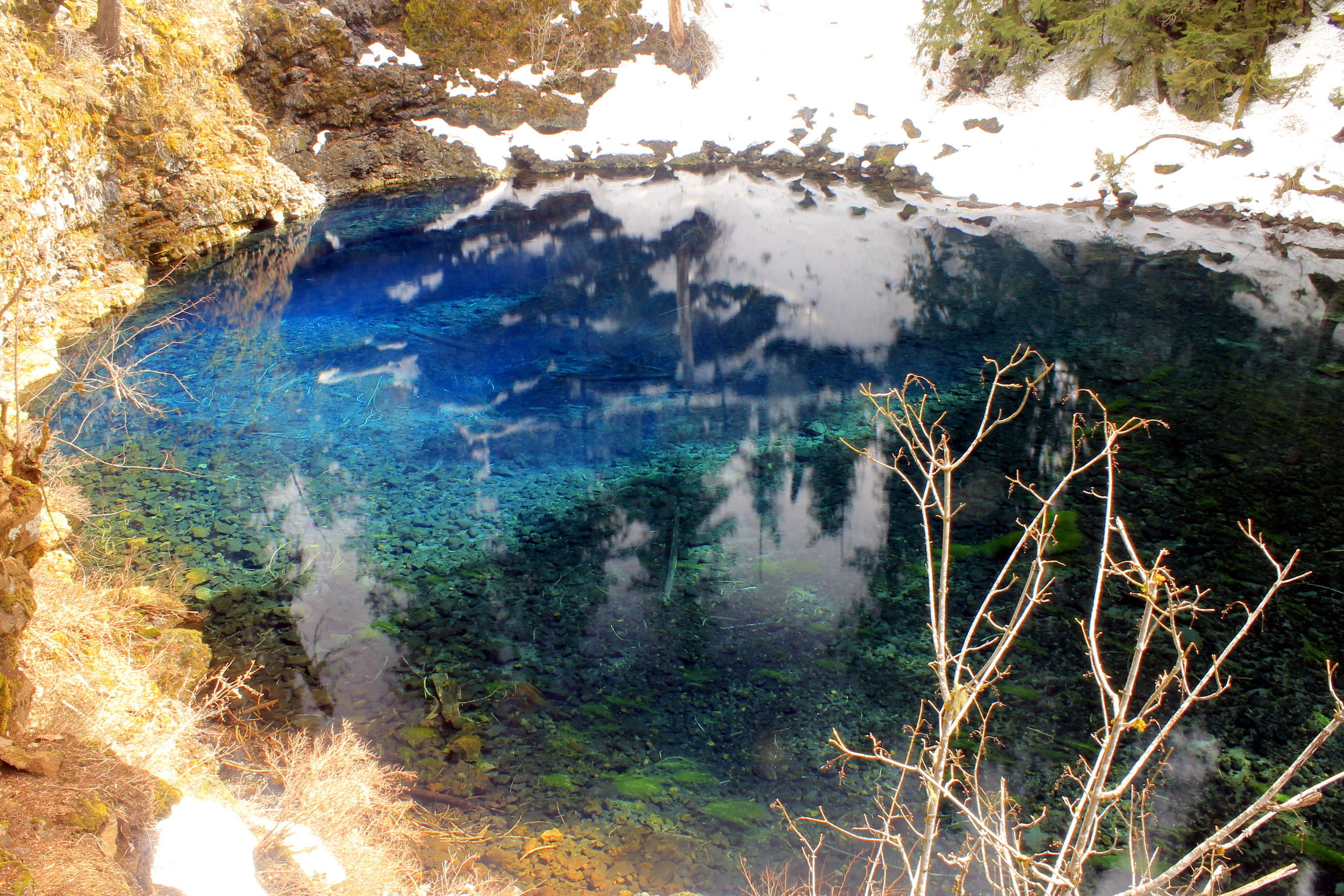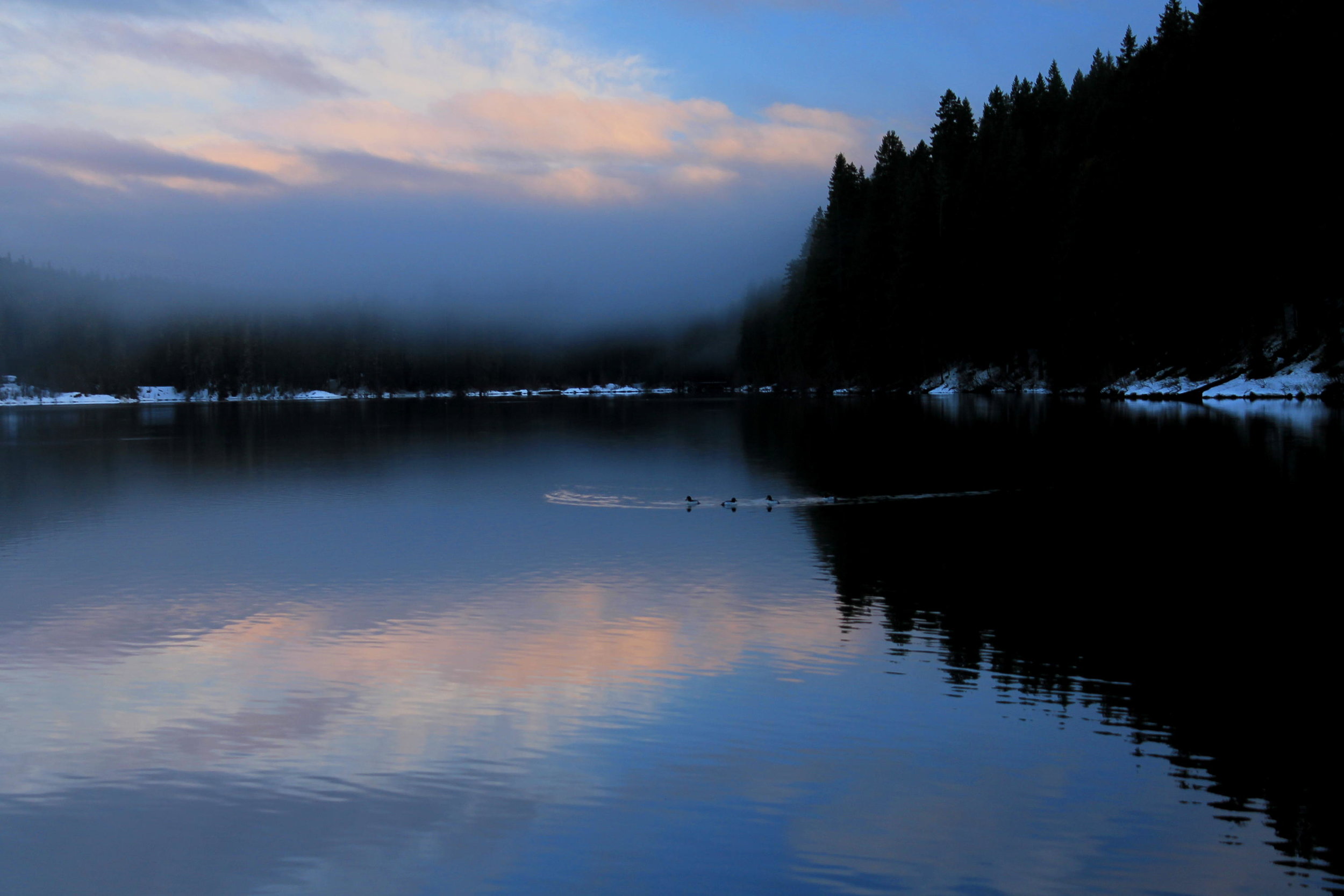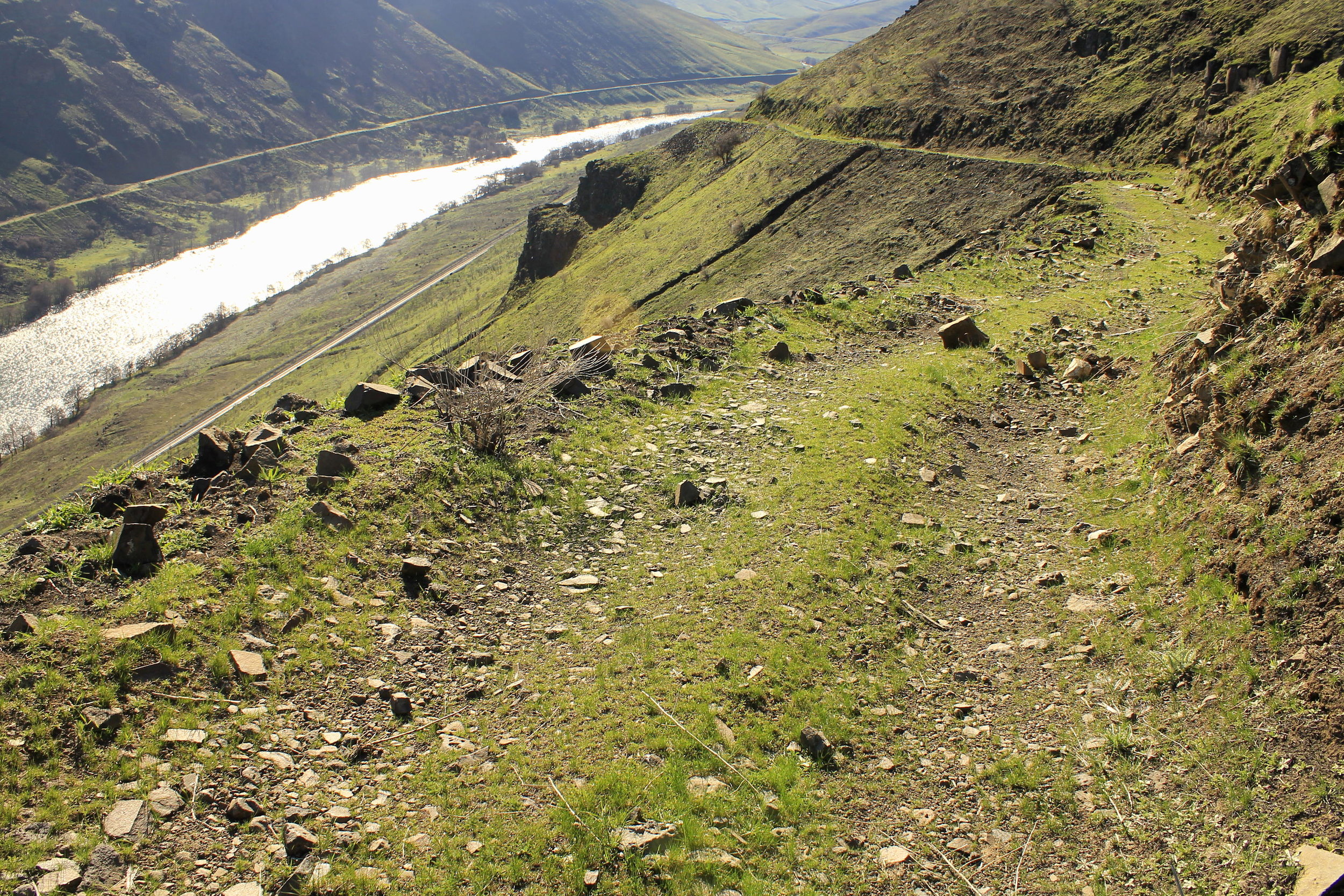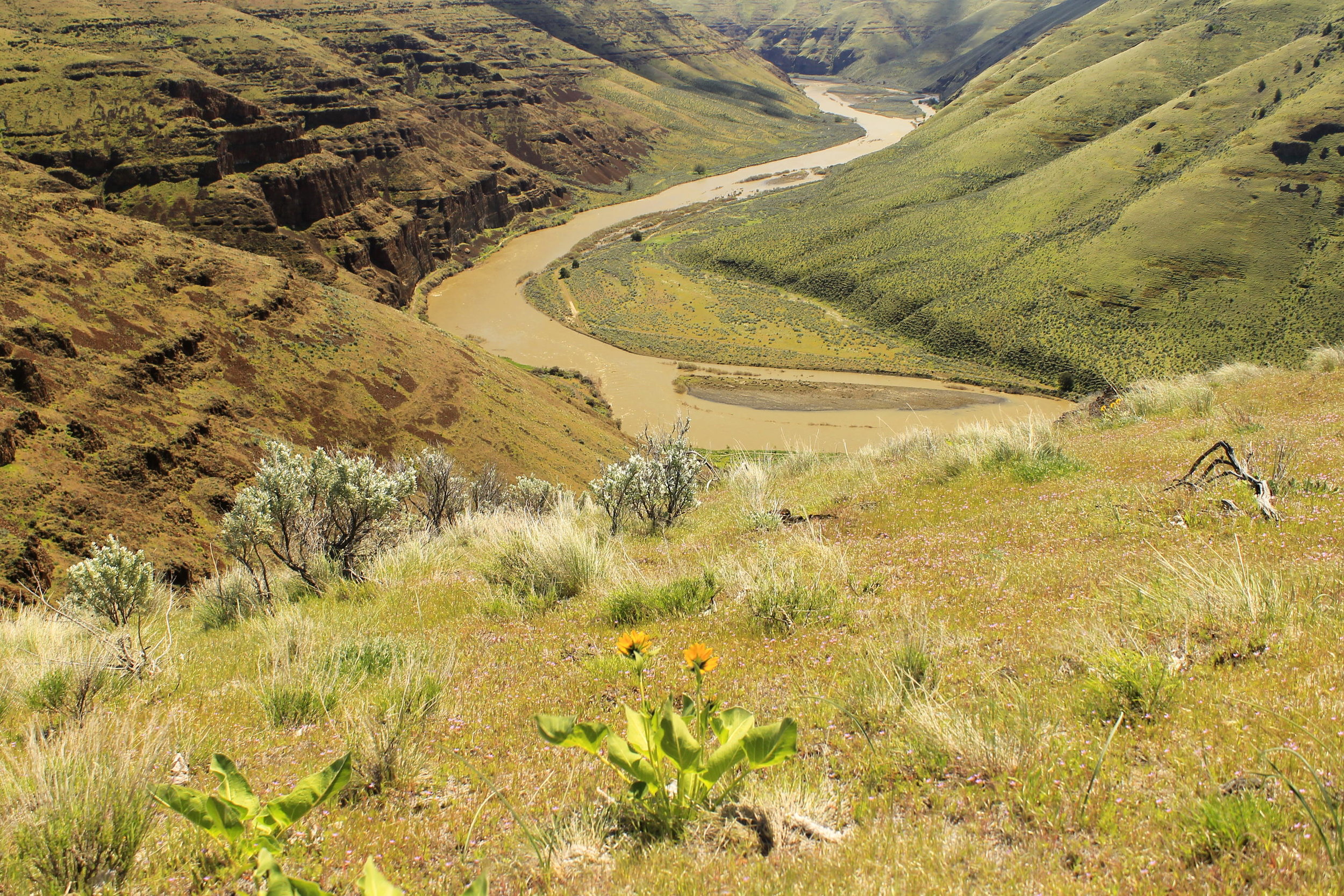The Deschutes River downstream from Mack’s Canyon.
Like so much of the Deschutes River canyon, the stretch from Mack’s Canyon down to the lower reaches of the Deschutes River had long intrigued me. Over the years I’ve made it a habit of spending many of my winter days basking in the sunshine in the Deschutes canyon. Due to the long drive and supposed difficult access, I had never hiked Macks Canyon. In the few years before quarantine, I began to feel as though I had been everywhere (which of course is not true)…so I figured it was time to finally start exploring the places I had left unexplored.
I decided to organize a trip to Macks Canyon through the Adventurous Young Mazamas, with whom and for whom I lead hikes in saner times. I wasn’t sure what kind of group I would have who wanted to spend the entire day in a remote corner of the Deschutes canyon, but a lot of people signed up. We ended with a group of 8-9 folks ready to explore.
The drive into Macks Canyon was not nearly as difficult as I had been led to believe. We drove to Sherars Bridge and turned onto the 17 mile gravel road that follows the river north into its terminal canyon. The road was in excellent shape, with only a little rockfall and not too much washboarding. Every mile or two we would pass a campground or day use site, most of which were full of people. So it turns out this canyon is not as remote or little-known as I thought. We didn’t reach the end of the road until about 9:30 AM, but this still left plenty of time to explore. Although we had seen plenty of folks on our drive in, we were the only hikers on the trail.
Shortly after departing from the Macks Canyon Trailhead, we reached our first side canyon. The trail along the Deschutes River here is what remains of a railroad from the early 20th Century. The trestles are long gone, and hiking along this upper stretch requires scrambling down into gullies and then scrambling back out. There are trails through each of the gullies, but they are steep and crumbly. This first one wasn’t so bad:
Beyond this point, the old rail trail clings to the steep slopes above the river. Lower in the Deschutes Canyon the trail is a gravel road, but up here you’re walking on what’s left of the rail line.
Here is something you probably did not know about me: when I moved back to Illinois as a teenager, we didn’t have any hiking nearby to keep me distracted. We lived far out in the country, and I didn’t have a car or know how to drive. So instead, I walked the rail line near our house when I wanted to go for a walk. Trains used, and still use the line regularly. But I needed somewhere to walk.
Walking over railroad ties does not bother me in the slightest.
As we hiked further into the canyon, we passed over railroad ties, climbed over barbwire fence and picked our way in and out of side canyons. About 3 miles back, we passed an absolutely spectacular display of columnar basalt:
This was a basalt formation worthy of a thousand photos, and I marveled at how I had never seen a photo of it before. In many ways it reminded me of Giant’s Causeway in Northern Ireland, which I visited in 2008 with my friend Amy on my way home from my year in France:
Giant’s Causeway in Northern Ireland, July 2008.
Of course, it would be hard to imagine a place less like Northern Ireland than the Deschutes River canyon.
Anyway: after about 4.5 miles, we reached a rough spot in the canyon, at a deep gully tucked away in a river bend. We could see what appeared to be the end of the maintained trail on the far end of the bend, but it was already well past noon and we needed to turn around. What a wild place this was:
As we worked our way back upstream towards the trailhead, the daylight waned, presenting us with some wonderful photo opportunities:
The sun was already setting behind the canyon walls when we neared the trailhead, a reminder that November days are oh so short.
We reached the trailhead late in the afternoon, where we took a few minutes to explore a little more and bask in the sun. In November, you need to embrace sunny days…it might be a long while until you see another one.
I had grand plans for Mack’s Canyon for 2020, or at least the makings of grand plans. I was thinking about backpacking this canyon on my own in early spring; or I thought about doing this one-way downriver as a shuttle; or perhaps I would just come here and camp by myself for some peace and quiet. Now that COVID-19 has altered our plans, it’s hard to say if I will have that opportunity, even in fall. This would be a great place to socially distance, if you can find it.
When I’m out in a remote canyon somewhere, or out on a rugged ridge in the clouds, I often stop to just take it all in. Months or years later, when I am sitting on my computer at home, those feelings come back to me and I feel an immense gratitude for having had the experience…for having stopped, to appreciate how satisfied I was in the face of overwhelming beauty.
Thank you for reading.












